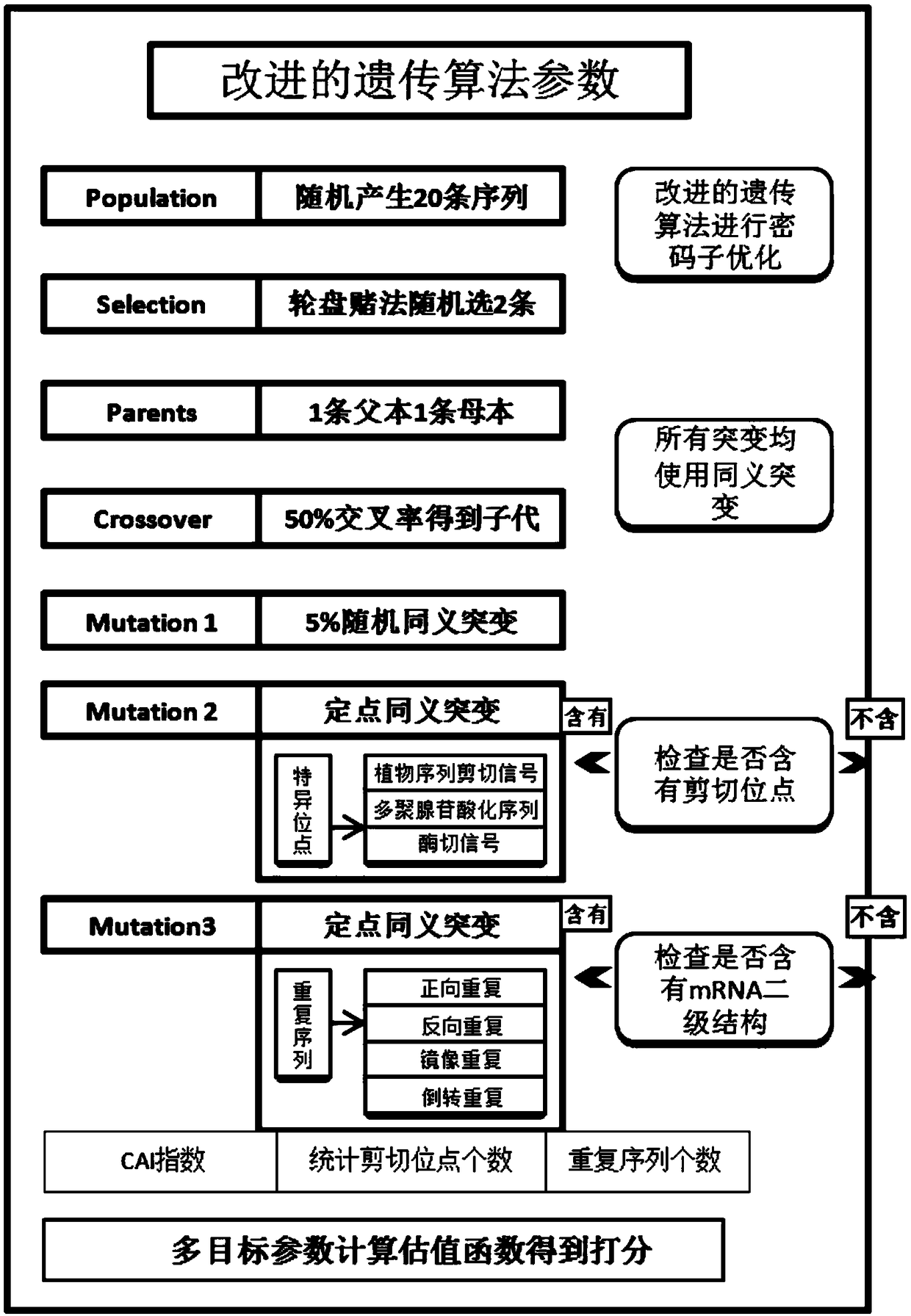A kind of codonplant system for plant exogenous gene modification and modification method thereof
A technology of exogenous genes and plants, applied in the field of genetic engineering, can solve problems such as insufficient translation of organisms
- Summary
- Abstract
- Description
- Claims
- Application Information
AI Technical Summary
Problems solved by technology
Method used
Image
Examples
Embodiment 1
[0052] A CodonPlant system for plant exogenous genetic modification, such as figure 1 As shown, it includes an input module, a processing module, and an output module; wherein, the input module is used for the user to input the gene sequence, codon usage frequency sorting table and the number of groups n (n >= 2 integer); the processing module is used to receive the input The codon information content and the codon usage frequency sorting table information content are effectively processed according to the group number n input by the user, and corresponding results are output through the output module.
[0053] The input module includes a sequence module, a codon usage frequency sorting table module, and a population number module. The sequence that can be input by the sequence module must be a multiple of three, and the input sequence is divided into triplets and sent to the processing module; the codon usage frequency The input format of the sorting table module is that syno...
Embodiment 2
[0147] Adopt the CodonPlant system for plant exogenous gene transformation of embodiment, carry out specific plant exogenous gene transformation, process is as follows:
[0148] The first step: input the NADH dehydrogenase original gene sequence of Bacillus thuringiensis bacteria (the sequence is shown in SEQ ID NO.1.)
[0149] Step 2: According to the sequence, 20 synonymous sequences (ie, different nucleotide sequences with the same protein) were randomly synthesized, numbered [0] to [19], and the corresponding sequences were shown in SEQ ID NO.2-21.
[0150] Step 3: Use roulette to randomly select 2 of these 20 entries. For example, the expected value of No. [0] is 0.2476, and the expected value of No. [3] is 0.2489. As parents, take half of the two sequences and perform cross-recombination to obtain a new sequence named new_seq, and carry out 5% of the new sequence. After the random synonymous mutation, scan the specific site in it again, perform fixed-point random mutati...
Embodiment 3
[0162] The method is the same as in Example 2, with the original sequence of cry9Aa-0 as shown in SEQ ID NO.24 (input sequence) for genetic modification, and the optimized sequence after 100 generations is shown in SEQ ID NO.25 (output result), Table 2 It is a comparison of the results before and after 100 generations.
[0163] Table 2 Comparison of results before and after 100 generations
[0164]
[0165]
[0166]
[0167]
[0168]
[0169] It can be seen from Table 2 that after the sequence was optimized for 100 generations, the expression level of the sequence increased significantly.
PUM
 Login to View More
Login to View More Abstract
Description
Claims
Application Information
 Login to View More
Login to View More - R&D
- Intellectual Property
- Life Sciences
- Materials
- Tech Scout
- Unparalleled Data Quality
- Higher Quality Content
- 60% Fewer Hallucinations
Browse by: Latest US Patents, China's latest patents, Technical Efficacy Thesaurus, Application Domain, Technology Topic, Popular Technical Reports.
© 2025 PatSnap. All rights reserved.Legal|Privacy policy|Modern Slavery Act Transparency Statement|Sitemap|About US| Contact US: help@patsnap.com



